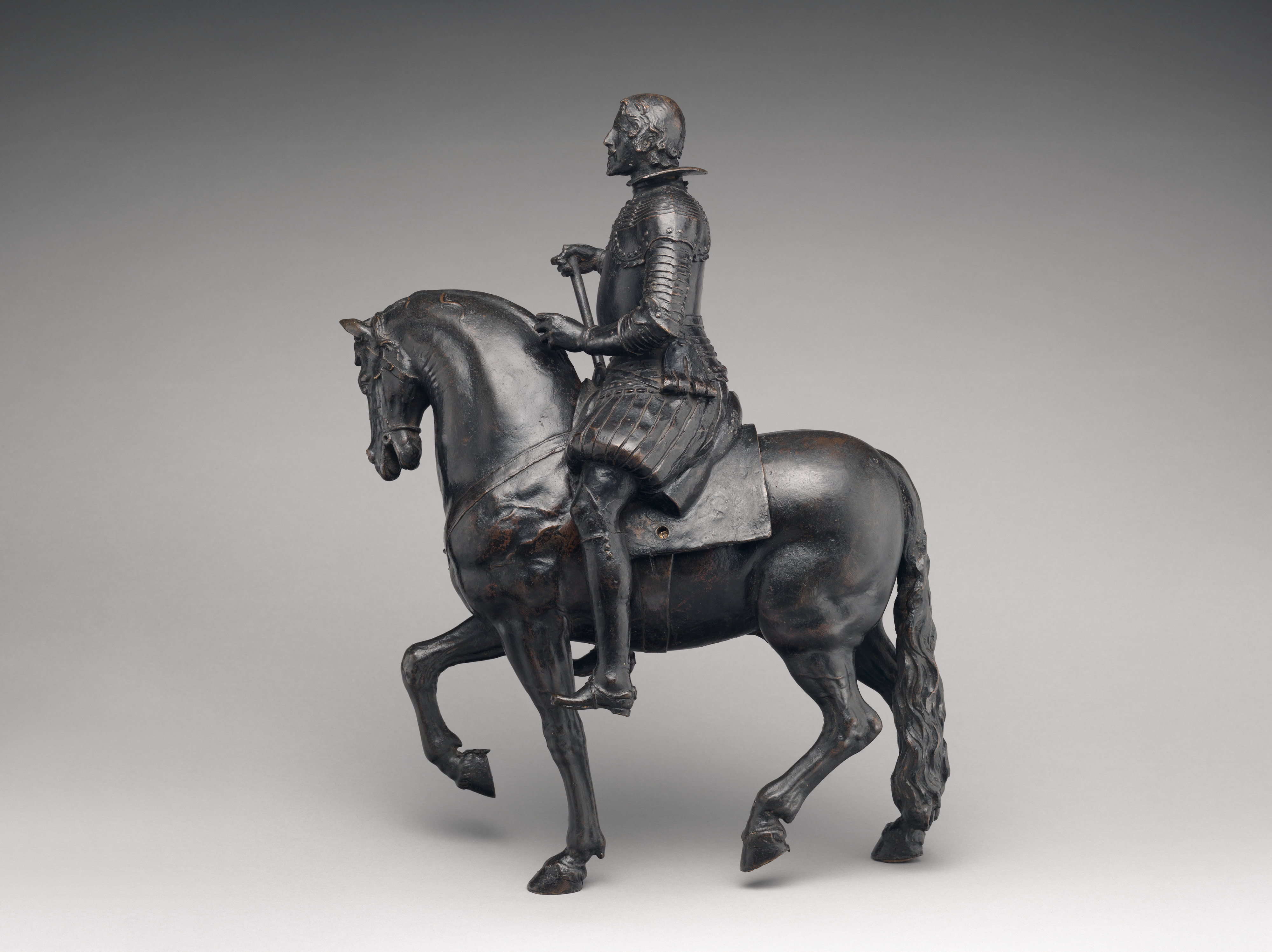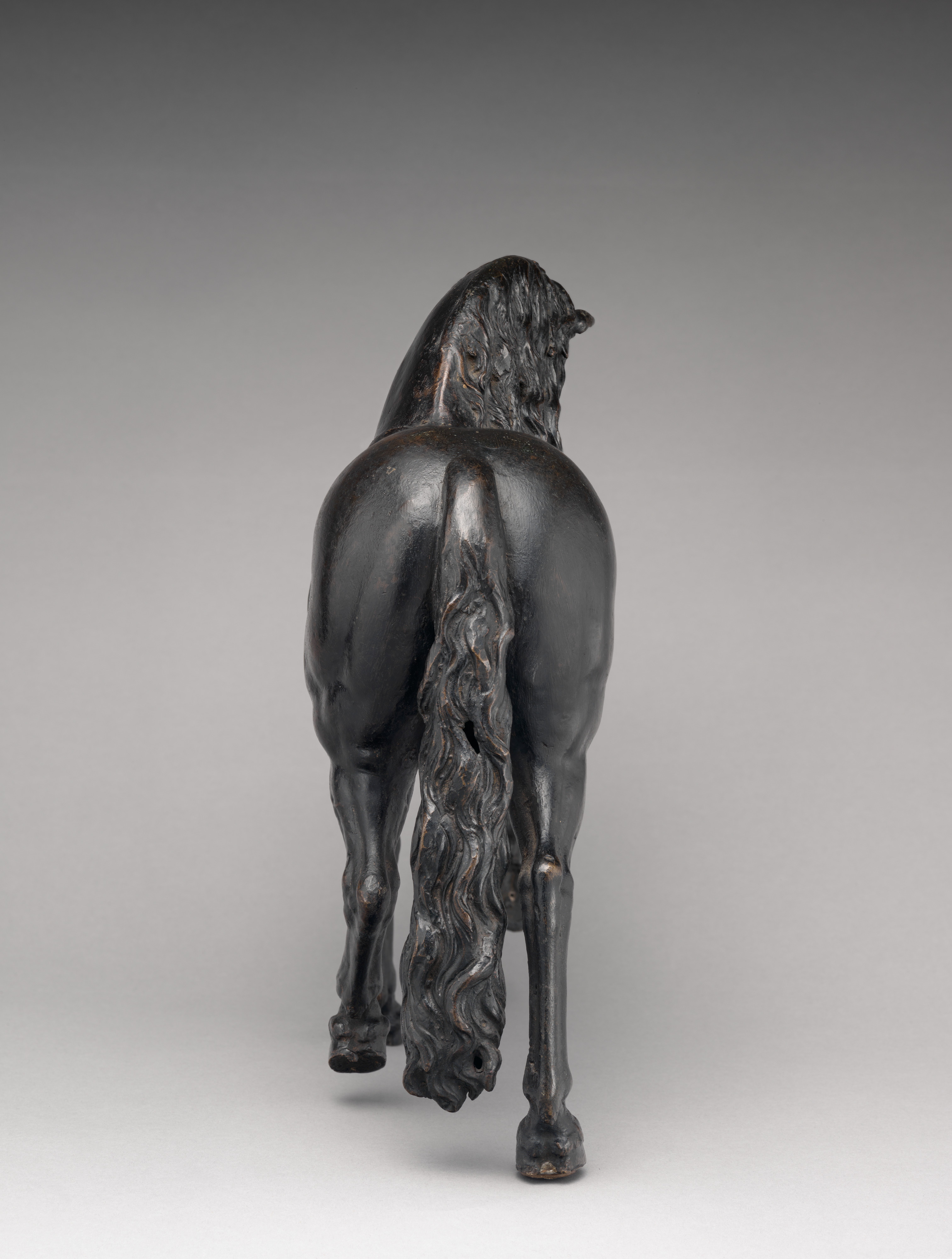Equestrian statuette, possibly of Philip IV, King of Spain
Possibly after a model by Pietro Tacca Italian
Not on view
The rider wears the fashionable costume, coiffure, and golilla (stiff collar) of a seventeenth-century Spanish nobleman. The horse, with its restive demeanor and luxuriant cascading mane, is a parade specimen. They were cast separately, intended to be joined with two screws located on the saddle. The rider’s head seems also to have been cast separately from the golilla and body, which suggests that the equestrian statuette was part of a series with interchangeable heads.[1] The cast is extremely thin and even, which provides further proof that the sculpture dates to a later serial production.[2] The present bronze was believed to be French, nineteenth century.[3]
At least two other examples of the composition are known: one in the Detroit Institute of Arts, the other formerly in the Cyril Humphris collection.[4] The Detroit and Met statuettes reflect the same model, including such defects as the missing index finger on the right hand. W. R. Valentiner assigned the Detroit bronze to Pietro Tacca, as possibly a cast from a preliminary study for the equestrian bronze monument of Philip IV (r. 1621–65), originally commissioned for the Buen Retiro in Madrid.[5] More recently, Alan P. Darr has argued for an attribution to Francesco Fanelli (with which Patricia Wengraf agrees), while noting the inferiority of the “less sharply cast and finished” Met version.[6] While the subject has traditionally been recognized as the Spanish Habsburg king Philip IV, Darr and Wengraf propose that the rider represents the monarch’s prime minister Gaspar de Guzmán, conde-duque de Olivares. Given what we know of Olivares’s very specific features, immortalized in Velázquez’s portraits, this identification is not persuasive.[7]
The analysis of our bronze is made more complicated by the existence of several versions of the same equestrian model but with different riders. Darr has broadly discussed all of them, and Charles Avery has published one that seems to represent King Charles I of England, attributing it to Fanelli.[8] Fanelli did, indeed, cast his bronzes in several parts,[9] but this technical practice alone is not compelling enough to support an attribution to him of the casts or the model. The seriality of these casts, and the possible interchangeability of the rider, suggest that they are nineteenth-century products.
-FL
Footnotes
(For key to shortened references see bibliography in Allen, Italian Renaissance and Baroque Bronzes in The Metropolitan Museum of Art. NY: The Metropolitan Museum of Art, 2022.)
1. Darr at al. 2002, p. 21.
2. R. Stone/TR, 2012.
3. Springfield 1981, p. 111.
4. DIA, 29.348; see Darr et al. 2002, pp. 21–24 (with earlier bibliography). The Humphris bronze was auctioned at Sotheby’s, New York, January 10, 1995, lot 62. See also Torriti 1984, pp. 76–78, fig. 53.
5. Valentiner 1935.
6. Darr et al. 2002, pp. 21–22; Leithe-Jasper and Wengraf 2004, p. 208.
7. On Olivares, see Elliott 1986.
8. Darr et al. 2002, p. 23; C. Avery 2011.
9. See Seitun 2018, pp. 82–83.
Due to rights restrictions, this image cannot be enlarged, viewed at full screen, or downloaded.
This artwork is meant to be viewed from right to left. Scroll left to view more.







